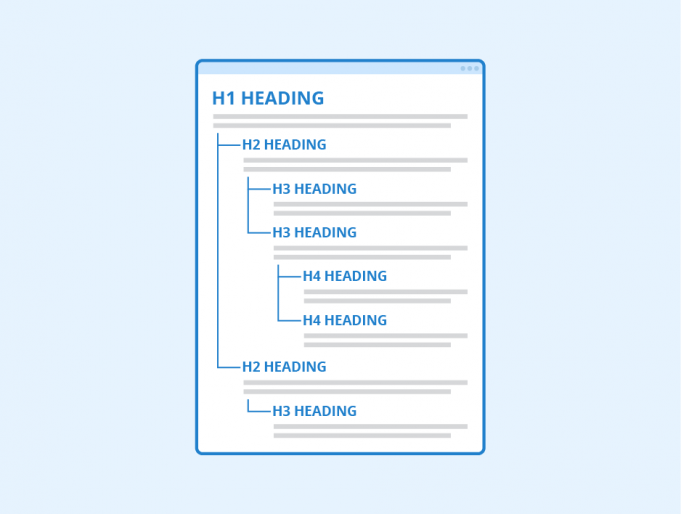Content Marketing is all about good content quality and format structure of the content. You need to ensure both of these tactics in your content marketing strategy. You can create good quality content, and well-structured content requires proper use of headings, heading tags, bullet headings, and much more. This article explains why heading tags matter in content marketing.
How Headings Tags Matter in Content Marketing
Headings tags are an essential part of SEO or content marketing, which can help your website to stand on top of google ranking. Let’s learn more about headings and heading tags in brief.
How Header or Heading Tags Were Introduced
Before the era of webpages, printed materials and hard copy materials like books, notes, newspapers, posters, and magazines utilized headings or header texts to give a glance at the subject, and what the content was based upon. Creators used different fonts, styles, sizes to differentiate the heading from the entire content. The best example is the headline of a newspaper, which was written in bold and had a comparatively large font with the article.
In 1990, webpages were introduced to the public. Content creators of webpages found it challenging to show what the article was all about. So they used the same strategy of using headings and header tags in their content. Headings and header tags served a similar purpose of giving a short introduction about the content’s subject. They were represented by “H” followed by any number. Later on, different fonts, sizes, formats of headings started serving with the heading, which attracted more visitors and made headings easier to read. Now, headings or header tags are made with different colors and designs and are merged with pictures for better visuality.
Significance of Headings and Header Tags
Whenever you visit a website, the first thing you notice in an article or content is the heading. Headings or header tags are the most visually valuable content on a webpage or site. Headings and header tags are mostly ignored and are not seen as SEO features. However, the better headings and accurate positioning of headings, can push your website on Google’s top rankings. Mostly, marketers and website managers focus more on the content and technical optimization of the page. Still, they always forget that every bit matters to stay on top of the ladder.
How Headings Impacts Search Engines
Headings help web crawlers to look for meaningful and relevant content. If you look for the hierarchy of headings, you will find H1 text as the most critical part of SEO. Web crawlers search for headings that have some relevant content to the search terms, and then they present it on Google’s ranking page. Headings also help web crawlers to categorize the surface content of the blog or articles. However, the placement of keywords in H1-H6 tags doesn’t contribute much in the SEO rankings. These heading tags specify the relative importance of headings or the main keywords.









